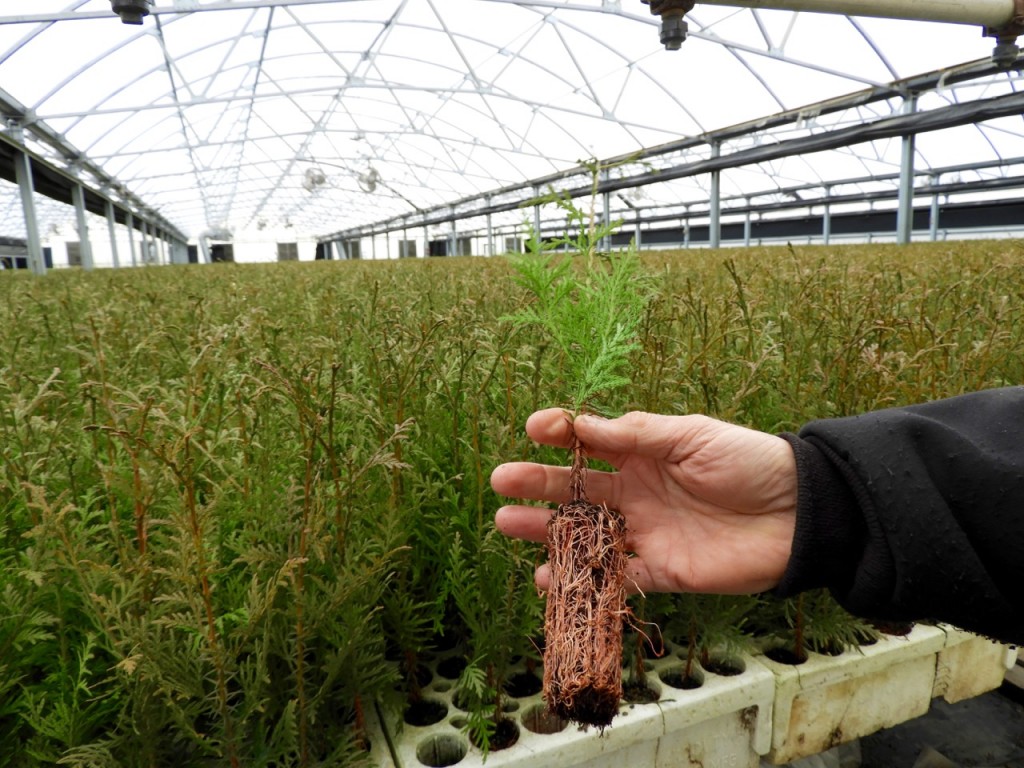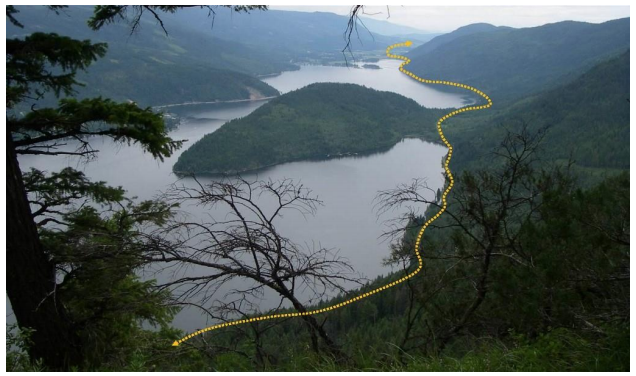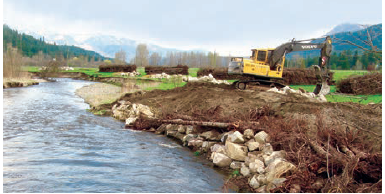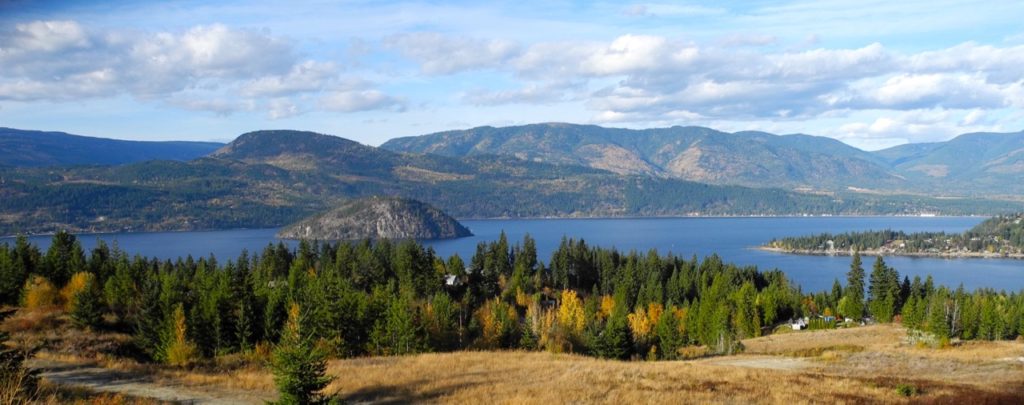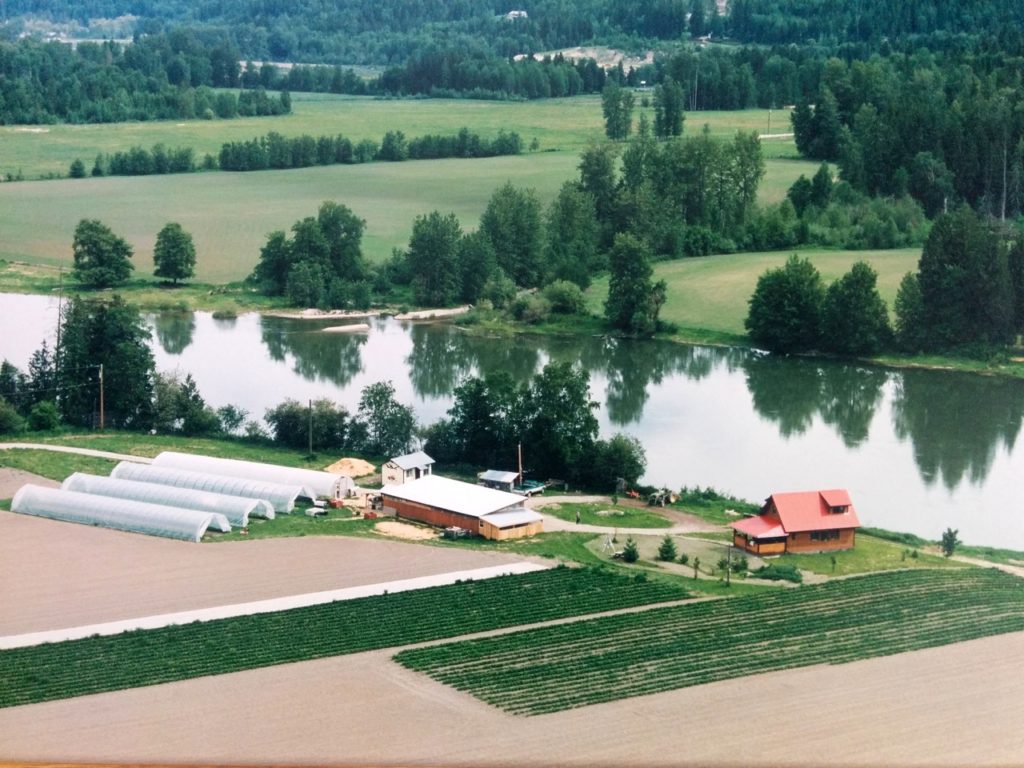 Wildflight Farm near Mara on the Shuswap River
Wildflight Farm near Mara on the Shuswap River
The pandemic has been a massive shock to humanity and as a result, there may never be a return to the same lifestyle we have always deemed to be normal. In fact, the disease has actually exposed all the flaws in our society and thus, it could become a catalyst for the changes needed to improve our lives. While most of the key decisions are made in Ottawa and Victoria, there are ways that regions, like the Shuswap, can change for the better.
The goal posts are shifting. For too long the mantra of continuous growth has been the driving force in the economy, as if we lived on an infinite planet where more of everything could continue forever. As society slowly emerges into a post-COVID world, the new buzzword is resilience, which communities now desire as they grapple with all the threats to our way of life that have been exposed by the pandemic.
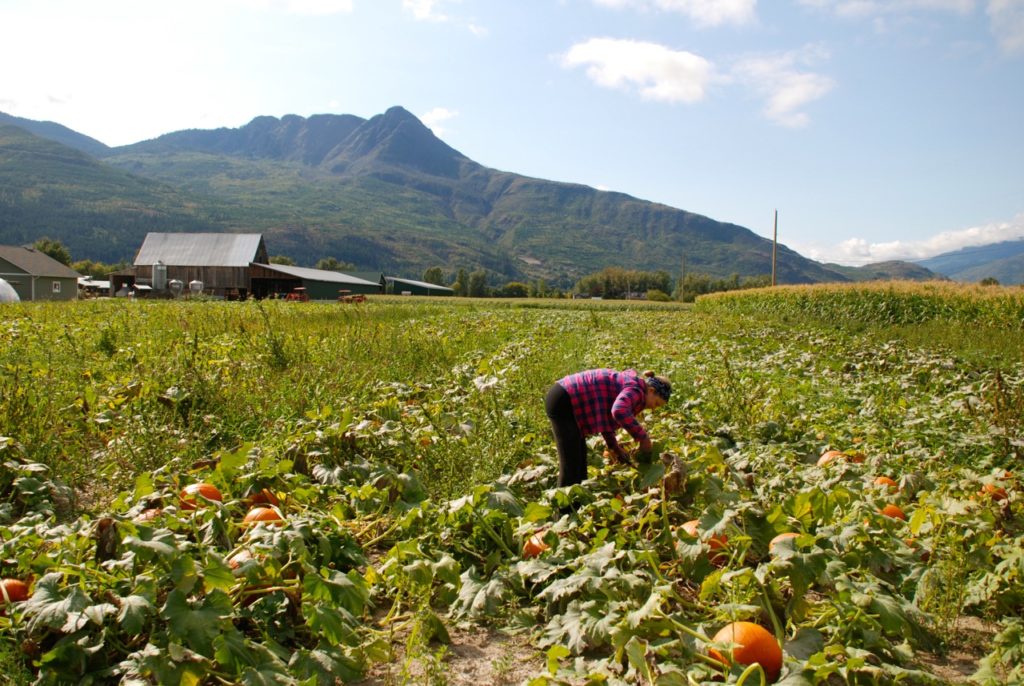 Harvesting pumpkins on a farm in the Salmon River valley, photo by Jim Cooperman
Harvesting pumpkins on a farm in the Salmon River valley, photo by Jim Cooperman
First and foremost are the risks to our food supply, since most of it is either imported from the U.S. and Mexico or is dependent on foreign temporary farm workers. Fortunately, the Shuswap has an abundant supply of quality arable land, which has the potential to feed all of us with ample more for export.
However, there are many obstacles that need to be addressed before sustainable agriculture can become a solution. Much of our farmland is underutilized and the costs are far too expensive for young people to purchase land. Solutions could include lease to purchase opportunities, cooperatives, and revising the rules to allow for large farms to be subdivided into smaller acreages that would be farmed more intensively.
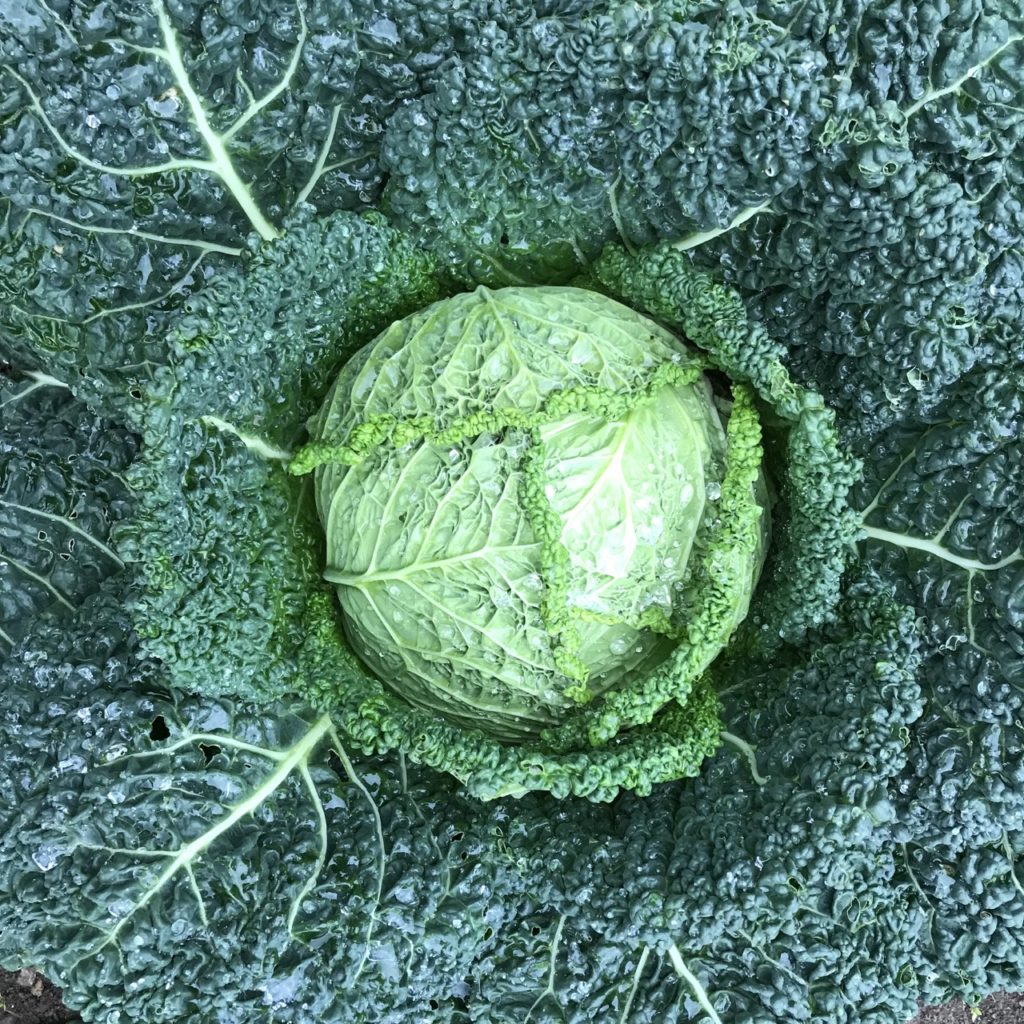 In addition to providing more opportunities for growing food, we need to revise our diets to include more of the types of food we can grow and store locally. A classic example is the standard head of lettuce, which is a basic staple for most families. While there is no shortage of greens during the growing season, throughout the winter fresh greens can only be grown here under lights. Cabbage is the ideal replacement in the winter, as it stores well under refrigeration and it is more nutritious and flavourful.
In addition to providing more opportunities for growing food, we need to revise our diets to include more of the types of food we can grow and store locally. A classic example is the standard head of lettuce, which is a basic staple for most families. While there is no shortage of greens during the growing season, throughout the winter fresh greens can only be grown here under lights. Cabbage is the ideal replacement in the winter, as it stores well under refrigeration and it is more nutritious and flavourful.
One of a million cedar tree seedlings in this Sorrento greenhouse grown in plugs, photo by Jim Cooperman
In addition to food, the Shuswap also grows fabulous trees. As the forest industry continues to weaken due to a combination of a declining timber supply and job-killing mechanization, the need for seedlings increases. Already, there are three successful tree nurseries and there is no doubt that more are needed, given the demand due to forest fires, pests, and logging.
The Shuswap-North Okanagan Rail Trail Greenway along Mara Lake viewed from Hyde Mountain, photo courtesy of the Shuswap Trail Alliance
Tourism, which has long been a key part of the Shuswap economy, is taking a hit from the pandemic and its recovery may be hampered for a few years until there are fewer risks from travel and more people can afford to enjoy a vacation again. A mitigation strategy could be pursued that would help to expand the tourism season by promoting Shuswap’s fabulous hiking and biking trails, as well as by building more trails, including the rail trail.
With so many people now working from home, the nature of work will likely change for the better once we are free from the pandemic. It is possible that many people will want to exit from the cities to live in rural communities, where they can enjoy a healthier lifestyle, more recreational opportunities and yet still be able to work remotely via the internet.
Salmon River restoration, April 2007, photo by John Vivian
Many experts are calling for a green recovery that focuses on investments in technologies and infrastructure that help reduce carbon emissions. Ecosystem restoration is part of the federal plan and it is possible that funding could be secured to restore more of the Salmon River riparian zones.
Shuswap Lake, photo by Jim Cooperman
Achieving greater resilience would include improving our community’s ability to cope with the stress from climate change and economic malaise, as well as from infectious diseases. Economic and social planning that encourages greater self-sufficiency, better food security, more affordable housing and a higher level of social cohesiveness would help to ensure that the Shuswap remains one of the best places in the world to live.
POSTSCRIPT
Will Shuswap’s communities and economic development organizations continue to promote “business-as-usual” strategies to encourage the local recovery from the pandemic? With the world turned upside down due to the virus, the path forward should look different than the path that has been followed so far.
There are many threats ahead to our “normal” way of life and if we are to be prepared, we need a new strategy that encompasses environmental sustainability, economic equality and innovative approaches to ensure our communities continue to thrive in the future.
